News Headlines
 CU Boulder is participating in a cloud-seeding effort, launched this month, to increase winter snowfall in the mountains of southwest Idaho with hopes of ultimately increasing power generation by hydroelectric dams.
CU Boulder is participating in a cloud-seeding effort, launched this month, to increase winter snowfall in the mountains of southwest Idaho with hopes of ultimately increasing power generation by hydroelectric dams. Distinguished Professors Leslie Leinwand (Chief Scientific Officer, BioFrontiers Institute; Professor, Department of Molecular, Cellular and Developmental Biology) and Chris Bowman (James and Catherine Patten endowed chair of the Chemical and Biological Engineering Department) have been named fellows of the National Academy of Inventors (NAI).
Distinguished Professors Leslie Leinwand (Chief Scientific Officer, BioFrontiers Institute; Professor, Department of Molecular, Cellular and Developmental Biology) and Chris Bowman (James and Catherine Patten endowed chair of the Chemical and Biological Engineering Department) have been named fellows of the National Academy of Inventors (NAI).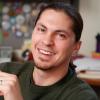 Clint Carroll will help to preserve tribal tradition and knowledge for future generations through the Faculty Early Career Development Award, a five-year grant from the National Science Foundation.
Clint Carroll will help to preserve tribal tradition and knowledge for future generations through the Faculty Early Career Development Award, a five-year grant from the National Science Foundation.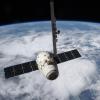 Several students are playing significant roles in the upcoming launch of a SpaceX rocket carrying two CU Boulder payloads – one designed to help researchers better understand and perhaps outsmart dangerous infections like MRSA, another to help increase the proliferation of stem cells in space, a potential boon for biomedical therapy on Earth.
Several students are playing significant roles in the upcoming launch of a SpaceX rocket carrying two CU Boulder payloads – one designed to help researchers better understand and perhaps outsmart dangerous infections like MRSA, another to help increase the proliferation of stem cells in space, a potential boon for biomedical therapy on Earth.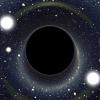 University of Colorado Boulder students and professionals will operate an upcoming NASA mission that will investigate the mysterious aspects of some of the most extreme and exotic astronomical objects like stellar and supermassive black holes, neutron stars and pulsars.
University of Colorado Boulder students and professionals will operate an upcoming NASA mission that will investigate the mysterious aspects of some of the most extreme and exotic astronomical objects like stellar and supermassive black holes, neutron stars and pulsars.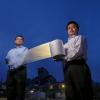 A team of University of Colorado Boulder engineers has developed a scalable manufactured metamaterial — an engineered material with extraordinary properties not found in nature — to act as a kind of air conditioning system for structures. It has the ability to cool objects even under direct sunlight with zero energy and water consumption.
A team of University of Colorado Boulder engineers has developed a scalable manufactured metamaterial — an engineered material with extraordinary properties not found in nature — to act as a kind of air conditioning system for structures. It has the ability to cool objects even under direct sunlight with zero energy and water consumption. CU Boulder’s new Laboratory for Interdisciplinary Statistical Analysis (LISA) merges the worlds of data analytics, business, and research to create a single dynamic resource for powerful evaluation and forecasting.
CU Boulder’s new Laboratory for Interdisciplinary Statistical Analysis (LISA) merges the worlds of data analytics, business, and research to create a single dynamic resource for powerful evaluation and forecasting.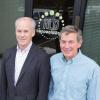 The thickness, or lack thereof, of ALD is breathtaking. Each layer of the coatings the researchers lay down is generally the thickness of a single atom—about a million times smaller than the thickness of a human hair.
The thickness, or lack thereof, of ALD is breathtaking. Each layer of the coatings the researchers lay down is generally the thickness of a single atom—about a million times smaller than the thickness of a human hair.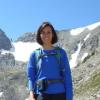 Antonella Albuja’s doctoral degree in aerospace engineering from CU Boulder just became more valuable, as did the educational, research and career prospects of those who follow her in the Smead Program, thanks to $15 million in support from a notable Colorado family.
Antonella Albuja’s doctoral degree in aerospace engineering from CU Boulder just became more valuable, as did the educational, research and career prospects of those who follow her in the Smead Program, thanks to $15 million in support from a notable Colorado family.


